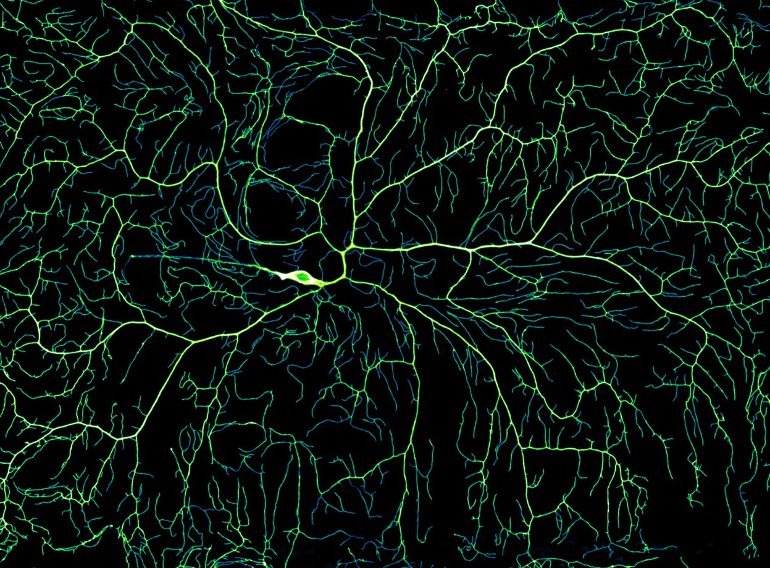
Summary: The study reveals the molecular mechanism that allows neural networks to grow and branch.
source: Yale
Our nervous system is made up of billions of neurons that talk to each other through axons and dendrites. As the human brain develops, these structures branch out in a beautifully complex but poorly understood way that allows neurons to form connections and send messages throughout the body. And now, Yale researchers have discovered the molecular mechanism behind the growth of this complex system.
Their findings were published in science progress.
“Neurons are highly branched cells, and they are because each neuron connects to thousands of other neurons,” says Joe Howard, Ph.D., Eugene Higgins Professor of Molecular Biophysics and Biochemistry and Professor of Physics, and Senior Researcher. Study researcher.
“We are working on this branching process – how do branches form and grow? This is what lies behind the whole way the nervous system works.”
The team studied the growth of neurons in fruit flies as they matured from embryos to larvae. To visualize this process, they marked neurons with fluorescent markers and imaged them on a rotating disk microscope. Because nerve cells are located just under the skin [outermost layer]The researchers were able to monitor this process in real time in live larvae.
After imaging neurons at different stages of development, the team was able to create time-lapse movies of growth.

In the early stages of development, sensory neurons began with only one or three dendrites. But in less than five days, they had blossomed into large tree-like structures with thousands of branches.
Analysis of dendritic tips revealed their dynamic and stochastic (randomly selected) growth, which fluctuated between growth, contraction, and paused states.
“Before our study, there was a theory that neurons might expand and contract like a balloon,” says Sonal Shree, PhD, research scientist and lead author of the study. “And we found that no, they don’t inflate like a balloon, but rather grow and branch out.”
“We find that we can explain neuronal growth and general morphology quite well in terms of what the cell terminals do,” says Sabyasachi Sutradhar, PhD, research scientist and co-lead author of the study.
“This means that we can now focus on the tips, because if we can understand how they work, then we can understand how the whole shape of the cell looks,” Howard says.
There is a whole realm of branching out in biology, from the veins and arteries of the circulatory system to the bronchioles of the lung. Howard’s lab hopes that a better understanding of branching at the cellular level will also shed light on these processes at the molecular and tissue levels.
About this research in Neuroscience News
author: Isabella Bachmann
source: Yale
Contact: Isabella Bachmann – Yale
picture: Photo credited to Howard Lab
original search: open access.
“Dynamic instability of dendrite tips generates the highly branched forms of sensory neuronsBy Sonal Shri et al. science progress
Summary
Dynamic instability of dendrite tips generates the highly branched forms of sensory neurons
The highly complex arbors of neural dendrites provide the substrate for the brain’s higher connectivity and computational power. Altered dendritic morphology is associated with neurodegenerative diseases.
Several molecules have been shown to play critical roles in shaping and maintaining dendrite morphology. However, the basic principles by which molecular interactions generate branched forms are poorly understood.
To illustrate these principles, we visualized the growth of dendrites during larval development fruit fly sensory neurons and found that the tips of dendrites undergo dynamic instability, rapidly and randomly switching between growth, contraction, and pauses.
By incorporating these measured dynamics into a computational proxy-based model, we have shown that the complex and highly variable morphologies of these cells are a consequence of the stochastic dynamics of their dendrite tips.
These principles may be generalized to the branching of other types of neurons, as well as to branching at the level of cells and tissues.






More Stories
In Greece Porsche 911 50th Anniversary – How much does it cost?
PS Plus: With a free Harry Potter game, the new season begins on the service
Sony set to unveil PS5 Pro before holiday season – Playstation